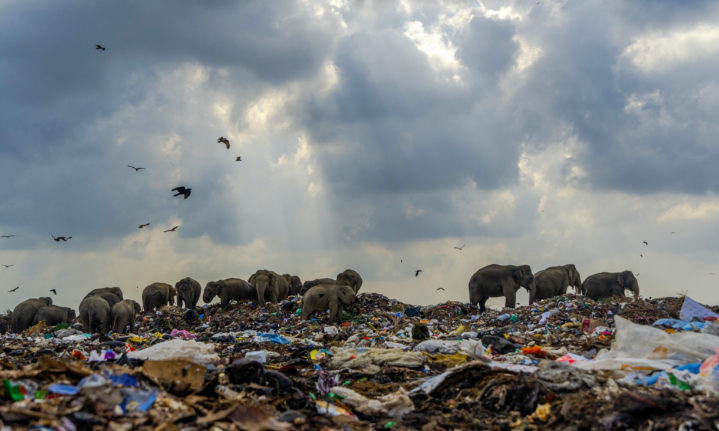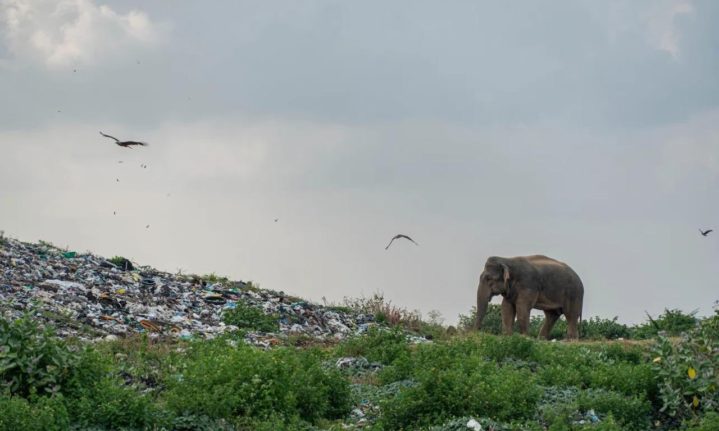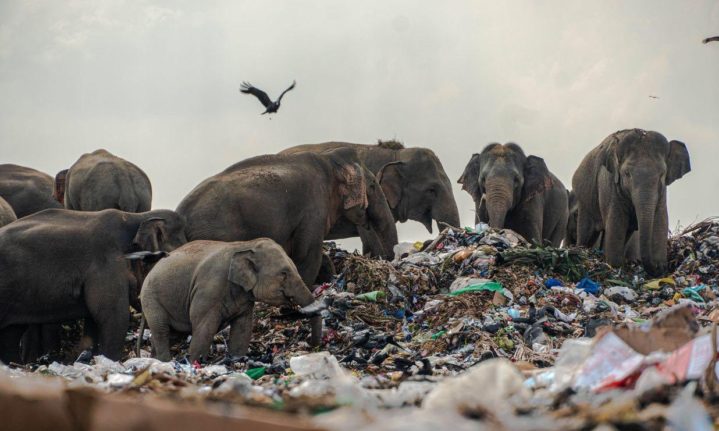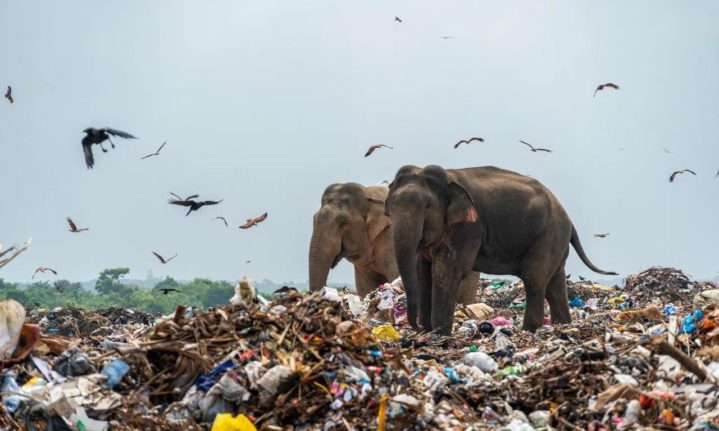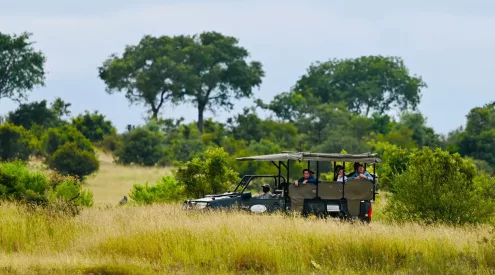A series of images taken in Sri Lanka show a herd of Asian elephants rummaging through a large rubbish dump for food.
The rubbish dump is in the Ampara district, close to a forest inhabited by the elephants and has no fencing around to prevent animals from entering. The 30-strong herd has a number of calves and are used to feeding at the landfill, gaining closer proximity to villages in the area.
Besides the harmful results of this polluted area to the animals and the environment, the elephants are feared to potentially go into the villages for more food which could result in human-wildlife tension.
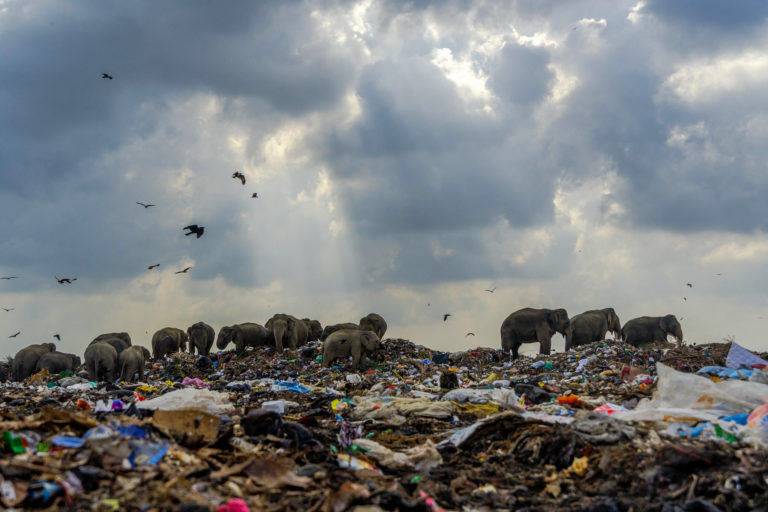
Taken by photographer Tharmaplan Tilaxan, this image won first prize in the Royal Society of Biology(RSB) Awards
‘As a result of unintentionally consuming microplastics and polythene, large quantities of undigested pollutants have been found in the excretion of these wild animals. A number of postmortems carried out on elephant cadavers have yielded plastic products and non-digestive polythene in their stomach contents,’ Tilaxan said.
‘Despite a number of roundtable discussions with authorities that arrived at many solutions — including the construction of a reinforced fence around the garbage dump — no action has been taken to prevent the wild elephants of Oluvil from entering the urban areas in search of food, predominantly in garbage dumps,’ he added.
The Asian elephant is classified as Endangered by the International Union for the Conservation of Nature (IUCN). According to National Geographic, the population has declined by an estimated 50 % over the past 75 years, and there are an estimated 20,000 to 40,000 Asian elephants left in the wild.
‘The frequency of elephant casualties is a call to all stakeholders to unite and arrive at a solution that will resolve this issue as soon as possible,’ Tilaxan concluded.
Take a look at Tilaxan’s other photographs below.
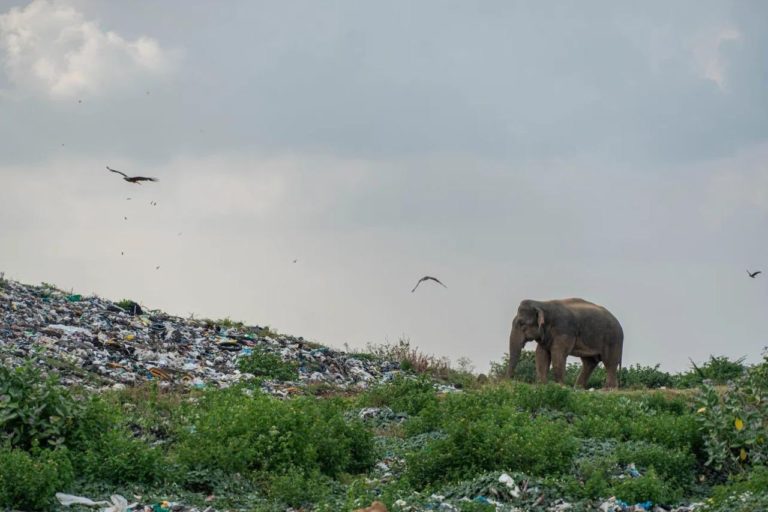
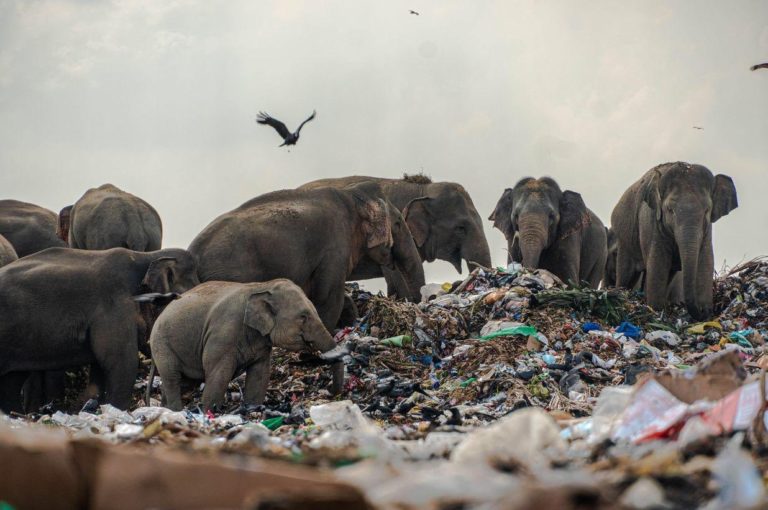
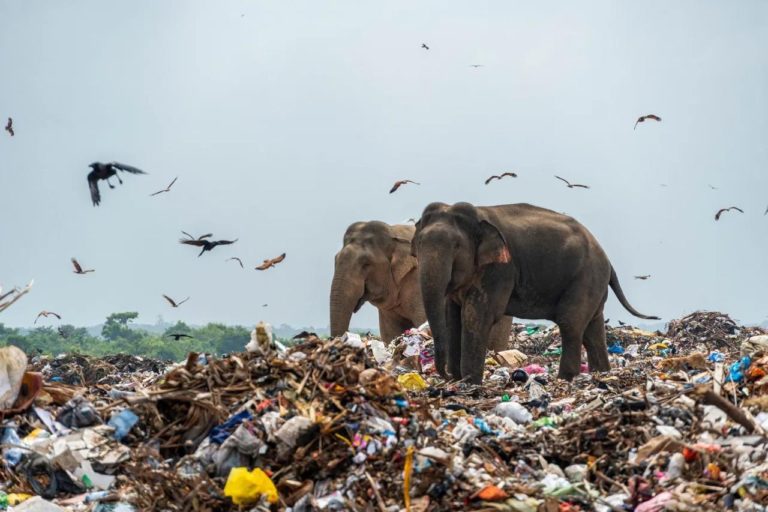
Pictures: Tharmaplan Tilaxan









